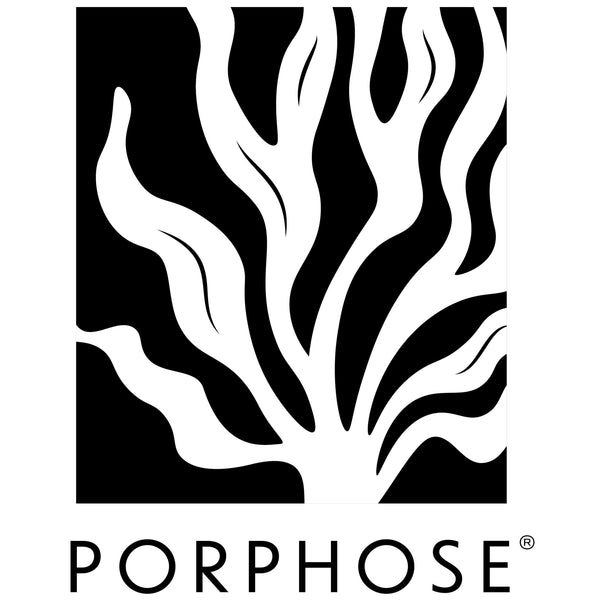Kelp vs. Red Algae: Which One Delivers the Best Skin Benefits?
Share
When it comes to marine-based skincare, two types of algae stand out: kelp and red algae. Both are celebrated for their hydrating, nourishing, and anti-aging properties, but each offers unique benefits for the skin. With so many skincare products incorporating these algae, it can be hard to know which one is truly right for your skin. Let's dive into the differences between kelp extract and red algae and explore which one delivers the best results for your skincare needs.
What is Kelp Extract?
Kelp is a type of large brown seaweed that thrives in the cold waters of the ocean. Rich in vitamins, minerals, and antioxidants, kelp is often used in skincare to hydrate and protect the skin. Kelp contains essential fatty acids and polysaccharides that form a barrier to lock in moisture, preventing water loss and keeping the skin hydrated for longer periods of time.
In addition to hydration, kelp is packed with vitamins A, C, and E, which are known for their skin-rejuvenating properties. These nutrients help to combat the visible signs of aging by reducing oxidative stress, brightening the complexion, and promoting a healthy skin barrier. The minerals found in kelp, such as iodine and magnesium, also contribute to detoxifying the skin, giving it a clear, healthy glow.
What is Red Algae?
On the other hand, red algae—like the Porphyridium cruentum used in Porphose—is a powerful antioxidant-rich marine plant known for its ability to protect the skin from environmental damage. Red algae is often considered one of the most potent anti-aging ingredients in the skincare world due to its impressive concentration of carotenoids and polyphenols.
Carotenoids, such as astaxanthin, are well-known for their ability to fight oxidative stress, which is one of the primary causes of premature aging. These compounds neutralize free radicals, helping to prevent fine lines, wrinkles, and sagging. Additionally, red algae helps to reduce inflammation, making it an excellent ingredient for sensitive or irritated skin, as it soothes and calms redness and irritation.
Kelp vs. Red Algae: Which One is Better for Your Skin?
When comparing kelp and red algae, both have powerful skin benefits, but they work in slightly different ways.
-
Kelp is ideal for those looking for deep hydration and barrier repair. Its ability to lock in moisture and create a protective barrier makes it a fantastic option for dry or dehydrated skin. The rich minerals in kelp also help detoxify the skin and improve its overall health, giving it a revitalized, nourished look.
-
Red algae excels in fighting oxidative stress and reducing the visible signs of aging. Its high concentration of antioxidants and anti-inflammatory compounds make it particularly beneficial for those concerned about premature aging, dark spots, or skin inflammation. If you have sensitive skin or are looking to address fine lines and wrinkles, red algae might be your best bet.
How Porphose Combines the Best of Both Worlds
While both kelp and red algae have unique benefits, Porphose integrates the power of red algae to offer superior anti-aging and antioxidant protection. By using Porphose, you're getting the potent benefits of Porphyridium cruentum, which not only hydrates but also helps protect the skin from environmental damage and inflammation. Its antioxidant properties help neutralize free radicals, keeping your skin youthful and glowing.
However, Porphose doesn’t just rely on red algae. The formula is enhanced with marine polyphenols, which work synergistically to fight free radical damage and promote healthy, resilient skin. Whether you're looking to repair your skin’s moisture barrier, fight signs of aging, or protect against external stressors, Porphose offers a well-rounded skincare solution that provides the best of both algae worlds.
Why Choose Algae-Based Skincare?
Both kelp and red algae are part of the larger category of marine skincare ingredients, which have gained significant attention in recent years for their incredible skin benefits. Algae-based ingredients are naturally rich in vitamins, minerals, and antioxidants, making them perfect for nourishing the skin, improving elasticity, and reducing signs of aging.
Moreover, marine algae is a renewable and sustainable resource, making it an eco-conscious choice for those who are mindful of their environmental impact. By choosing algae-based products like Porphose, you're not just caring for your skin but also supporting sustainable skincare practices.
The Final Verdict: Kelp or Red Algae?
Ultimately, the choice between kelp and red algae depends on your specific skincare needs. Kelp is fantastic for hydration, skin barrier repair, and detoxification, while red algae offers superior antioxidant protection and anti-aging benefits. If you’re looking for a product that combines both hydration and anti-aging properties, Porphose with red algae is an excellent choice. It addresses multiple skin concerns, from fine lines and wrinkles to dehydration and inflammation.
